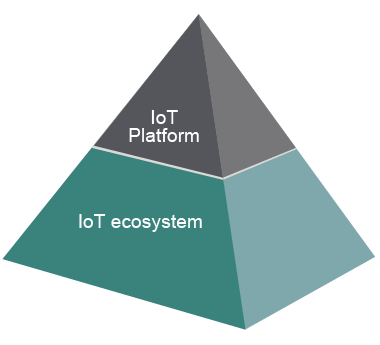What is the internet of things?
IoT technology is a collection of connected things able to communicate with one another.
Part of our Internet of Things briefing
Global | Publication | June 2019
IoT platforms provide services that have, as their primary focus, the exploitation of data existing at the higher layers of an IoT ecosystem. They:

In an IoT context this means that those who control the higher (data) layers in an IoT ecosystem (rather than the lower raw data, hardware, transmission and storage layers) may have an intrinsic advantage, because that is where insights lie.[2] Where are such data and insights to be found within an IoT ecosystem? At their most potent, in IoT platforms.
Whoever controls the platforms will rule the future. Attributed to Henning Kagermann by the European Commission, Cross-Cutting Business Models for IoT, 2017, page 42
The importance of data in the IoT value chain means capital investment in the underlying IoT devices and infrastructure may not be nearly as important as had been the case in other contexts. It also means that those involved in the infrastructure layers may be more beholden to demands at the higher data layers.[3]
It is hardly surprising, therefore, that businesses are adopting an increasingly diversified approach to their IoT offerings by strategies such as:[4]
IoT technology is a collection of connected things able to communicate with one another.
IoT platforms provide services that have, as their primary focus, the exploitation of data existing at the higher layers of an IoT ecosystem.
Addressing the economic, sectoral and geographical impacts of IoT.
Like all information technology, IoT technology is not immune from technology-related vulnerabilities.
The IoT device manufacturing industry is characterised by a relative lack of product lifecycle plan.
Considerations include privacy and cybersecurity, IP rights, liability and autonomous decision making issues, regulatory and competition, tax and litigation.
Businesses wishing to utilize IoT will need to consider a number of issues.
IoT stakeholders should be reviewing their privacy policies and terms and conditions.